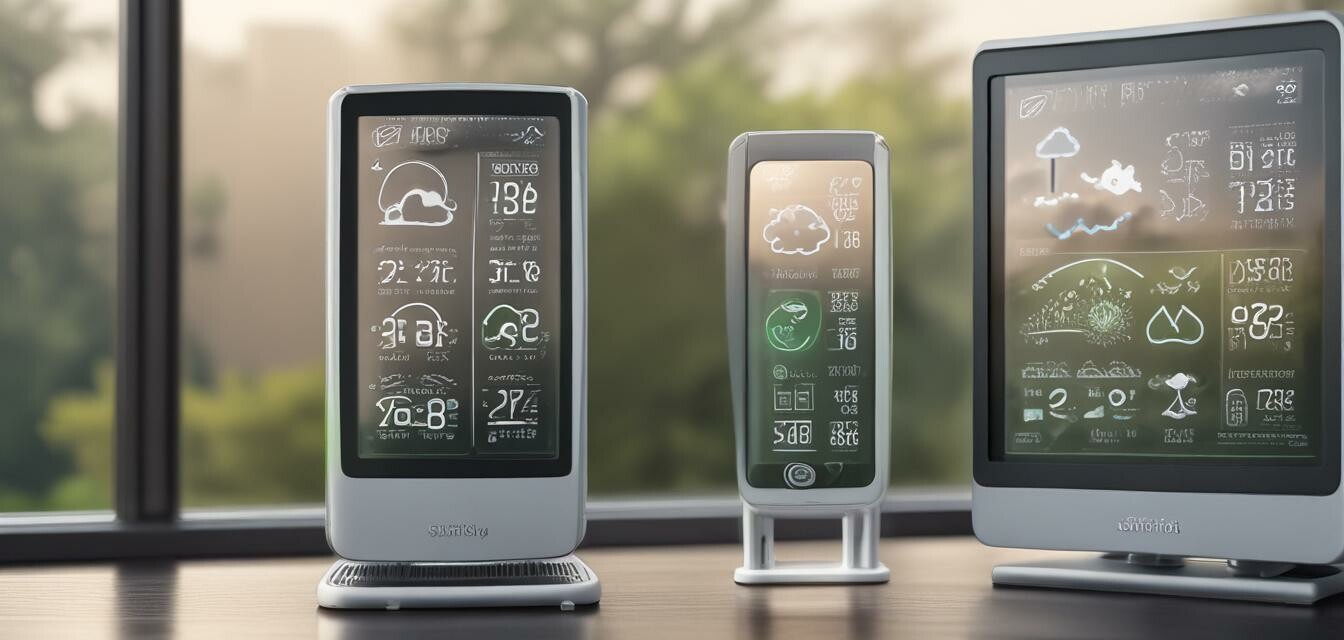
The Rise of Smart Weather Stations in 2024
Key Takeaways
- Smart weather stations are gaining popularity due to their advanced features and connectivity.
- Integration with home automation systems offers enhanced usability and convenience.
- Weather enthusiasts can monitor conditions in real-time, providing valuable insights.
- Technological advancements are leading to more accurate weather predictions.
The landscape of weather monitoring is evolving rapidly, and smart weather stations are at the forefront of this transformation. In 2024, these devices are not only gaining traction among weather enthusiasts but are also integrating seamlessly with home automation systems. This article explores the advancements in smart weather stations, their features, and the trends shaping this exciting niche.
Why the surge in popularity?
The rise of smart technology in our homes has made smart weather stations increasingly popular. As consumers move towards automation and data-driven living, these gadgets offer a perfect solution for personal weather monitoring. Here are several factors contributing to this surge:
- Easy accessibility: With the rise of mobile apps and cloud-based services, users can access weather data from anywhere.
- Real-time data: Smart weather stations provide live updates, allowing users to make informed decisions.
- Integration: Compatible with home automation systems for seamless synchronization.
- User-friendly interfaces: Simplified interfaces make it easy for anyone to use, regardless of tech-savviness.
Features of modern smart weather stations
Today's smart weather stations come equipped with a range of innovative features that enhance their usability and reliability. Here are some of the standout attributes:
| Feature | Description |
|---|---|
| Wi-Fi Connectivity | Allows for remote access and monitoring through dedicated apps. |
| Multi-Sensor Technology | Measures various weather metrics including temperature, humidity, wind speed, and rainfall. |
| Data Integration | Easily integrates with home automation systems for better control. |
| Alerts and Notifications | Provides real-time alerts for changing weather conditions. |
| Forecasting Capabilities | Utilizes advanced algorithms to predict weather patterns accurately. |
The role of home automation
One of the major trends in 2024 is the integration of smart weather stations with home automation systems. This compatibility offers several advantages:
- Automated responses: Devices can trigger actions based on weather data; for example, closing windows when it’s raining.
- Centralized control: Users can manage all home systems, including weather stations, from a single platform.
- Enhanced monitoring: Gain insights into how weather affects energy consumption, aiding in efficiency.
What to look for when buying a smart weather station
When considering a smart weather station for your home, it is crucial to identify the key features that matter to you. Here’s a checklist:
- Ensure compatibility with existing home automation systems.
- Check for a user-friendly mobile application.
- Examine the range of sensors available and their accuracy.
- Look for data analysis and forecasting capabilities.
- Consider the design and aesthetics of the unit to fit your home.
Future of smart weather stations
Looking ahead, the future of smart weather stations appears promising. The evolving landscape encourages advancements in data analysis, sensor technology, and user interfaces. As users become more savvy and curious about their immediate environment, the demand for more sophisticated weather monitoring solutions is bound to grow.
Pros
- Comprehensive weather data at your fingertips.
- Integration with smart home systems for convenience.
- Customizable alerts tailored to individual preferences.
- Enhanced awareness leading to better preparedness.
Cons
- Initial investment can be higher than traditional stations.
- Dependency on technology may lead to potential data loss.
- Internet connectivity issues can affect functionality.
Stay informed with WeatherWifi
As smart weather stations continue evolving, it’s essential to stay updated with the latest trends and innovations in this exciting field. For more information, be sure to check out our buying guides for Various weather station gadgets, and stay tuned to our blog for the latest news on emerging industry trends and technological advancements.
Conclusion
The rise of smart weather stations in 2024 represents a significant shift in how we monitor and understand our weather environment. With advancements in technology, integration with smart home systems, and user-focused features, these devices are proving to be indispensable for weather enthusiasts. Embrace this captivating trend and take your weather monitoring experience to the next level!